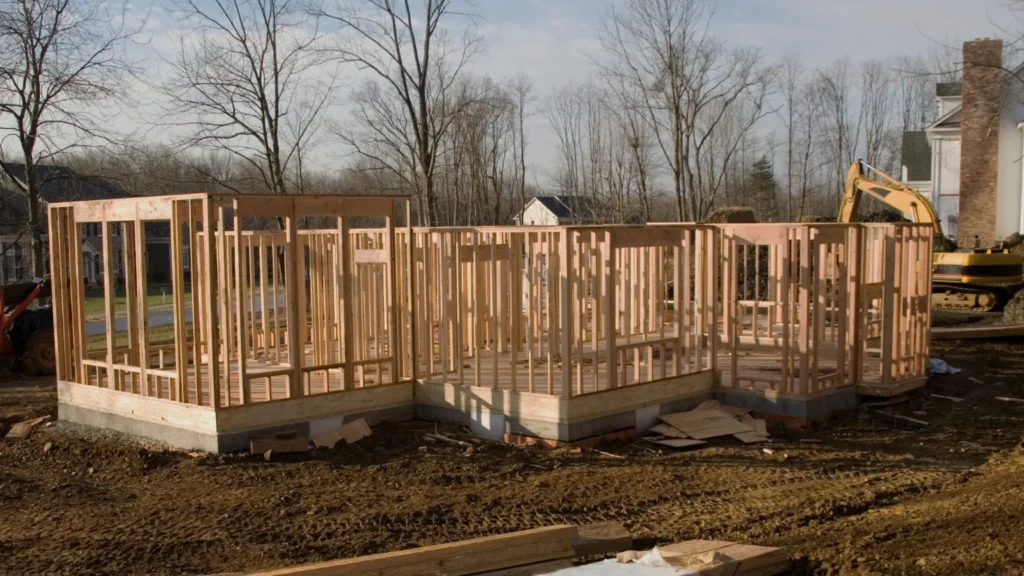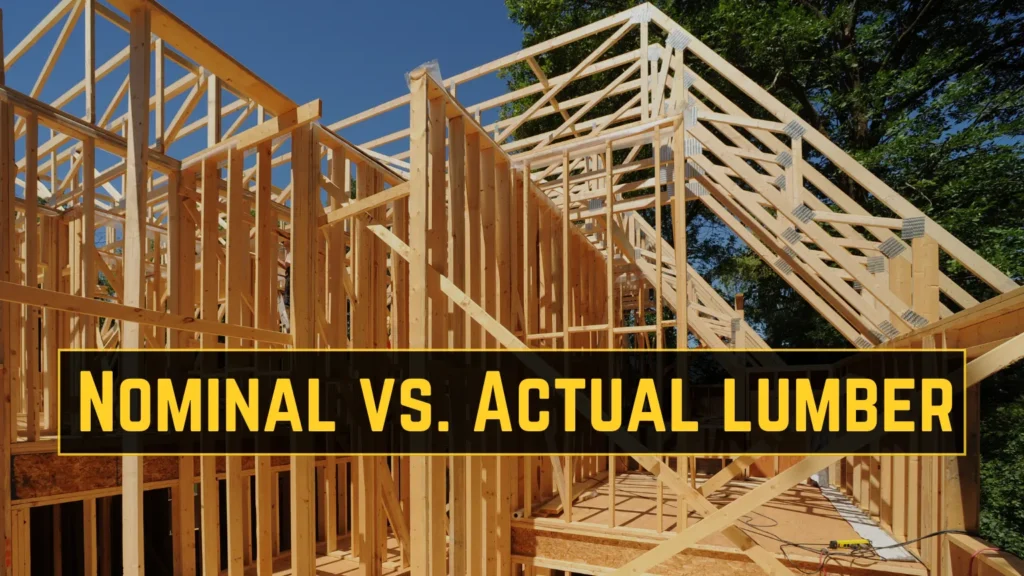
Updated On: February 10, 2025
Is Pressure-Treated Lumber Safe for Gardens?
Pressure-treated lumber is generally considered safe for use in gardens, especially with the advancement in treatment methods. Historically, pressure-treated wood was treated with chromated copper arsenate (CCA), a compound containing arsenic, which raised concerns about harmful chemicals leaching into the soil and potentially affecting plant health. However, over the past two decades, CCA has been phased out, and today, pressure-treated wood is typically treated with safer alternatives such as alkaline copper quat (ACQ) and copper azole (CA). These newer chemicals are less toxic and pose minimal risk to plants and humans. Pressure-treated lumber has been widely used in construction and landscaping because of its resistance to decay, insects, and the natural environment.
While pressure-treated lumber provides durability and resistance to rotting, concerns regarding the chemicals used in its treatment process have made many gardeners question its safety. Modern pressure-treated lumber is a safe choice for your garden projects, mainly if you use the more recent treatments. Knowledge of the materials you work with and simple precautions to minimise potential exposure will make your garden healthy and thriving. Let’s look closer at the safety of pressure-treated lumber and practices that ensure your garden stays healthy and free from contaminants.
Safety of Pressure-treated Lumber in Gardens
Pressure-treated wood lumber has been treated through chemicals to be hardier and less liable to degrade fast due to climatic elements causing the wood to erode. Wood may quickly destroy itself because of moisture, pets, or fungicides. Such processing makes it stand longer, especially in the outdoor sectors. Nonetheless, it’s pertinent to identify the chemicals that facilitate the process because they directly determine safety standards when in soils.

Common Chemicals Used on Pressure-Treated Woods
Traditionally, CCA was the chemical most commonly used in the pressure-treating process of wood. Arsenic, a toxic chemical that poses extreme environmental and health hazards, was one of its primary ingredients; fearing arsenic exposure, the US Environmental Protection Agency phased out residential use of CCA in 2003, but constructions made before this are riddled with the deadly chemical.
Modern pressure-treated lumber employs alternatives, such as alkaline copper quaternary (ACQ) or Microbial Copper Azole (MCA). These preservatives contain copper to fight fungal decay and insect infestation but harm soil and plants. Also, some quaternary ammonium compounds used in the newer treatments have been associated with toxicity in aquatic life, thus drawing attention to ecosystems other than the garden.
Chemicals Leaching and Soil Contamination
Although newer chemicals such as ACQ and MCA have lower toxicity rates, they have the potential to leach into surrounding soil. For instance, as pressure-treated wood is exposed to rain or irrigation water moisture, the chemicals slowly leach into the garden bed. Risks associated with chemical leaching include high alteration of soil pH levels, resulting in its unfitness and total health.
Plant roots may absorb the chemicals leaching into the soil. This influences plant growth and contaminates the food produced, making it unsafe for human consumption, especially vegetables and herbs. The chemicals can also affect the health of the soil microbiome ecosystem and deteriorate it, impacting long-term garden productivity.
Transition to Safer Treatments
Historically, pressure-treated lumber contained poisonous chemicals, such as Chromated Copper Arsenate (CCA), that could cause danger to humans, plants, and the environment. As this danger became better known, CCA was gradually replaced, and today, safer treatments are commonly used. Of the safer alternatives, two of the most widely used and less toxic options include alkaline copper quaternary (ACQ) and Copper Azole (CA-B), which are far less harmful than CCA.
What Are ACQ and CA-B?
ACQ, or Alkaline Copper Quaternary, is a newer preservative that uses copper and quaternary ammonium to protect wood from decay, fungi, and insects. Copper prevents rot by stopping the growth of harmful microorganisms, while ammonium specifically targets insects and fungi.
Another treatment includes Copper Azole (CA-B), which combines copper with an azole compound. This again prevents decay by warding off the fungi and other harmful elements from the wood. Compared to CCA, the newer treatments contain no arsenic, and thus, they have become a boon for the environment and health, but they still incorporate copper, which is known to leach into the soil gradually in the long run.
Are These Treatments Safe?
ACQ and CA-B are safer than CCA, but a copper component can leach into the soil slowly. Plants and soil organisms might be harmed. Research shows that the amount of copper leaching from these treated woods is minimal and does not damage most of the plants with which it has contact. This element builds up within the soil if exposed repeatedly. Even a tiny amount of copper can accumulate over time, impacting soil health and plant growth. This is why taking some precautions to grow edible plants is crucial.
Precautions to Minimize Risks
Use a Barrier: One way to prevent copper from leaching into the soil is to place a physical barrier between the treated wood and the soil. For example, using plastic liners or landscape fabric inside garden beds will stop direct contact between the wood and the soil, helping to reduce contamination risks.
Monitor Soil Health: Observe whether your soil and plants are healthy or showing stress. Testing the soil for copper levels can be a way of monitoring changes. You can use the pressure-treated wood if you experience signs of plant stress or unhealthy soil.
Choose The Right Wood: If you’re thinking of avoiding the exposure of copper, it is better to make use of the wood treated explicitly for above-ground use, which is often referred to as non-ground contact. Since this option contains fewer chemicals and is safe for garden use, choose this instead.
So Vegetable Gardens Were Fine, Safe?
Pressure-treated wood can be used in vegetable gardens quite safely, but there are several things that one has to consider. The primary concern is that the chemicals in the treated wood might leach into the soil, thus affecting the health of the plants. Mainly, this would affect root vegetables such as carrots, potatoes, and beets, which grow directly in the soil and absorb chemicals from the earth surrounding them.
Over time, copper from treated wood can leach into the soil. While the amount released is usually low and nontoxic to plants, root vegetables are more vulnerable because they grow directly in the soil. They could absorb the copper if it were in significant amounts. However, studies indicate that copper leaching from modern treated wood is negligible and unlikely to affect plants in most cases.
How to Avoid the Risk?
To avoid any chance of copper poisoning, you can take some easy steps to safeguard your garden:
Do not plant root vegetables near treated wood: These leaves will be between the wood and the soil, preventing the root vegetables from contacting the treated lumber. You can use a barrier such as plastic sheeting or landscape fabric to ensure the soil does not touch the treated wood.
A barrier of Landscape Fabric or Plastic Sheet: Lining the garden bed with either plastic sheeting or landscape fabric is another, more effective means of preventing chemicals from leaching into the soil. It provides a barrier between the wood and the soil, thereby ensuring that chemicals from the treated lumber are not absorbed by the plant roots.
Consider Non-Root Vegetables: If concerned, grow vegetables whose edible parts are not in direct contact with the soil, such as tomatoes, peppers, or leafy greens. Such plants are less likely to absorb chemicals leached from the treated wood.
Use Safer Alternatives to Pressure-Treated Wood.
Safer and more environmentally benign alternatives for garden structures do exist, given the health and environmental concerns with pressure-treated lumber. Such alternatives support soil and plant health and foster organic gardening.
Naturally Resistant Woods
Some woods contain oils and chemicals that make them resistant to rot, decay, and insect infestation in their natural state. They are, therefore, excellent choices for garden framing without chemical treatment.
Cedar: This is a perfect choice for garden beds, as it is naturally impervious to rot, pests, and mold. The wood contains a chemical called thujaplicins, which offers protection against natural decaying factors. It also includes an aromatic smell that repels insects. This would be safer compared to pressure-treated lumber, as chemicals will not leach into the soil.
Redwood: Redwood is another naturally durable wood that resists decay. Its high tannin content is a natural preservative that protects the wood from insects and rot. Like cedar, redwood does not leach harmful chemicals into the soil, making it a safer option for garden use.
Teak: This is an expensive, naturally rot-resistant wood that resists the effects of weather outdoors. Teak does not succumb to termite infestations or rot from the weather. It’s very commonly used for furniture and makes excellent use of teak material in long-lasting garden structures like raised beds.
Non-Wood Options
Several options exist for creating garden structures with durability and safety benefits for a non-wood alternative, but none contain chemical leachates.
Composite Lumber: Composite Lumber is produced using recycled wood fibres and plastics. It resists decay and insects and doesn’t leach chemicals into the soil. This type of composite is also friendly to the environment. As it uses recycled materials, deforestation does not occur during this process. Composite lumber has a one-time high investment; still, its longevity can surpass the longevity of treated wood.
Concrete: For those who want a more permanent solution, concrete is an excellent material for raised beds. It is non-toxic and will not leach chemicals into the soil. Concrete raised beds are also easy to clean and maintain.
Stone and brick: Stone and brick are natural materials, not abrasive or leaching hazardous chemicals. They can be formed into raised garden beds or borders. They do not leach harmful substances and can add a decorative touch to your garden. They look more pleasing and develop a permanent structure over time compared to wood.
6. Ways of Mitigating Risks of Pressure-Treated Lumber
If you want to use pressure-treated lumber in your garden, consulting with an expert in lumber takeoff can advise you on whether this is the best choice and recommend alternatives like untreated wood, which might be safer for edible gardens. Accurate estimates can ensure that you use the right amount of lumber and avoid unnecessary waste and chemical exposure. If you still need to use pressure-treated lumber despite all its dangers, there are various ways of limiting the damage it can cause in your garden.
Sealing the Wood
Treatment of the wood Sealing chemicals that leach from pressure-treated lumber could be minimised with non-toxic sealants that cover the entire wood. Sealants can create a barrier that prevents the water from penetrating the wood and prevents the chemicals that are within the wood from reaching the ground, thus reducing their leaching. A nontoxic sealant, although one for the garden, has to be used in order to add no chemicals to the soil.
Use Plastic Liners
Line the inside of garden beds with plastic liners. That will create a physical barrier, which may be put between treated wood and soil, and thus, chemicals would no longer leak directly into the garden bed. Plastic liners work best in raised garden beds, reducing the likelihood of soil contamination as much as possible.
You can use pressure-treated wood treated with ACQ or MCA preservatives. They are safer for humans and the environment than older ones, such as CCA.
Maintenance
Inspect the pressure-treated lumber frequently for the appearance of wear or damage to achieve a long lifespan. Periodically use the sealant, such as every few years, to maintain the protective barrier. This will ensure the life of the wood and minimise the potential of leaching.
Ways to Apply Pressure-Treated Lumber in Gardens
Using pressure-treated lumber in the garden is essential to employing critical safety practices to minimise risks.
Labelled for Residential or Non-Ground-Contact Applications
One must always use only lumber treated explicitly above ground or residentially. That means wood treated for residential use will have fewer preservatives. In other words, the wood is safe to put in the garden. It resists rot, pests, and decay but with higher concentrations of chemicals used in different treatments.
Apply a Plastic Sheet or Landscape Fabric on The Garden Beds
This avoids leaching chemicals into the soil and prevents the chemicals from coming into direct contact with the soil, which would be harmful, especially for vegetables, since their roots grow near the wood.
Wash Your Hands After Handling the Treated Lumber
Even safer treatments, good practice is hand-washing after hand contact with the pressure-treated lumber. This could help remove most of the chemicals left upon touching the wood, making it less likely to be exposed.
Never Burn Treated Wood
Toxic chemicals get released into the air when pressure-treated wood is burnt. The smoke will affect your health and the environment. Dispose of treated wood as per the instructions given by the local authorities on how to dispose of it safely.
Environmental Factors

Toxic chemicals may leak into the environment if improperly disposed of, like burning or placing in a landfill. Most cities have regulations for treated wood disposal. Therefore, check what the local government says before determining what to do with your treated wood. In this case, you can consider several alternatives when making your garden bed, including untreated timber, composite boards, recycled metal, or even stone. Any of these can save the environment from poisonous chemicals while maintaining a functional and pretty garden.
Conclusion
Modern pressure-treated lumber is generally safe to use in gardens if precautions are taken. Even though some chemical leaching could still involve newer treatments, the hazards involved are usually far lower than those of older, well-established treatments like CCA. Best practice techniques like lining garden beds with plastic sheeting, employing non-toxic sealants and using root vegetables away from the wood can let gardeners make the benefits of pressure-treated lumber safely available while not injuring their plant’s health. If you’re still concerned that chemicals will leak into your garden, consider safer options like naturally rot-resistant woods or composites. The point is that knowledge preparation and proper choice-making based on your needs and concerns are key to a healthy, growing garden.

Tony Cummins began his career as a carpenter in a sawmill, where he learned the ins and outs of cutting and processing wood. Over the years, he honed his skills and gained vast knowledge about different types of lumber and their uses. After many years of working directly in the industry, he decided to start his company for preparing lumber takeoffs to help contractors.















